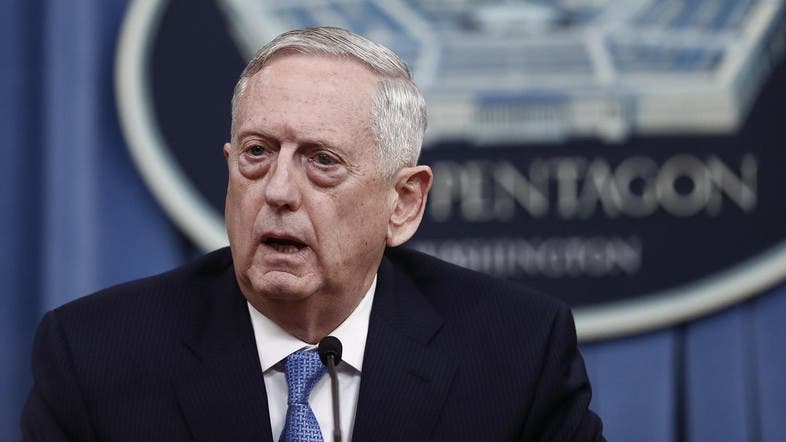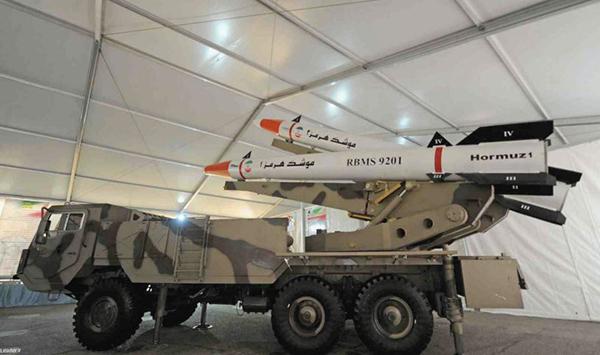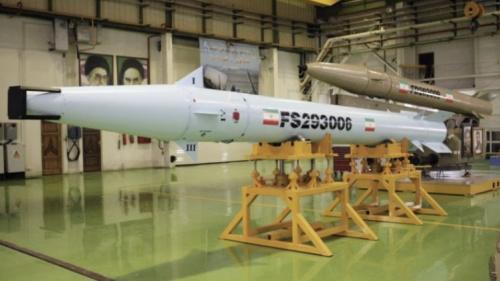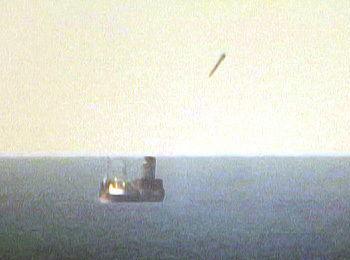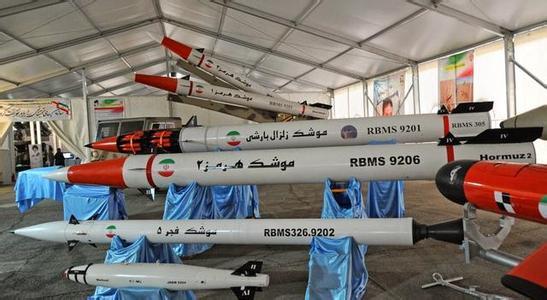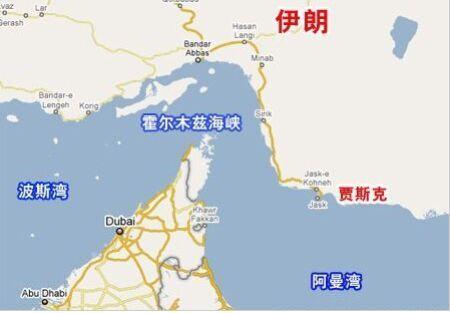http://mil.eastday.com/a/170518160933539.html
伊朗“霍尔木兹”反舰弹道导弹性能分析
2017-05-18 16:09 兵器知识
从外观看,伊朗展示的"波斯湾"和"霍尔木兹"导弹的总体外观变化不大,这与2010年8月公布的最初的"征服者"110是基本一致的,均沿用了较为标准和常见的铅笔形设计,总体设计布局和尺寸比例几乎完全一样。长径比基本保持在约14比1,在2010年8月的试验中曾透露"征服者"110导弹直径为0.61米,以此换算可知导弹长度约为8.5米。
"霍尔木兹"2反舰弹道导弹
从这一尺寸和比例来看,该类导弹具备较为典型的战术弹道导弹特征,射程和战斗部较为有限。在"波斯湾"导弹2011年2月试射成功后,伊朗官方透露导弹使用固体燃料,射程为300千米,弹头重量达650千克,总重3.5吨。从外观和布局变化不大可以判断,以后的"霍尔木兹"1及2型导弹的情况基本也是如此。
011年"波斯湾"导弹击中海上平台时采用了近乎垂直的攻顶模式
伊朗"波斯湾"和"霍尔木兹"系列导弹的气动设计在大体标准的前提下,做了较为谨慎的改进。从伊朗公布的"波斯湾"和"霍尔木兹"导弹照片来看,这一系列导弹尾部为4个垂直分布的截尖直角三角形尾翼,弹头颈部增加了4副小型直角三角形弹翼,从外观看为固定弹翼,且与尾翼方向呈45度角设置。
最为特别的是在导弹4个尾翼前端纵向,各设计了4副三角形空气舵,弹翼和空气舵设计在早期"征服者"系列中是没有的。从该舵的设置可以看出,该系列导弹具有全程飞行控制能力。由于该系列导弹头体不分离,且在这一射程内的导弹飞行弹道基本处于大气层内,因此导弹的空气舵会对导弹产生较大力矩,使导弹具有较高弹道机动性,对飞行稳定和打击精度至关重要。
伊朗“霍尔木兹”反舰弹道导弹性能分析
2017-05-18 16:09 兵器知识
虽然其面积较小,但由于导弹飞行速度较大,因此其可有效控制导弹飞行。从2011年"波斯湾"导弹击中海上平台的视频可以看出,导弹采用了近乎垂直的攻顶模式打击海上小型静止目标,而且在2017年3月试验的报道中伊方强调了"霍尔木兹"2打击了海上移动目标,表明该系列导弹具有较高的弹道机动性,适宜对海上移动目标的打击。
弹头外形方面,与第一代的"波斯湾"相比,第二代的"霍尔木兹"导弹的战斗部舱要略长,且平直一些,这表明其很可能与第一代"波斯湾"采用整体战斗部不同,而采用了集束式弹头。由于为扩大载荷利用效率,子弹需要在舱内顺序排列,因此形成了平直的舱段外观。子母集束战斗部是提高弹头破坏效率的较佳方案,但是也降低了单弹头的破坏威力,尤其是对航母等防护坚固的目标。
不过按照伊通社的说法,"波斯湾"导弹和"霍尔木兹"系列导弹的战斗部重量超过650千克,完全达到了重型反舰导弹的标准。而且从2011年试验影像可以看出,水面舰船目标的宽度大致为10~12米,集束式子母弹头也足以瘫痪其甲板以上建筑。
"波斯湾"和"霍尔木兹"系列导弹从卵圆形头锥发展为两节圆锥形头锥,减少了导弹再入时的漂移和阻力,使得"霍尔木兹"导弹再入速度从"波斯湾"导弹的3马赫提高到4~5马赫。特别值得注意的是,2011年"波斯湾"导弹试验射程达到300千米,而2017年"霍尔木兹"2导弹在阻力减小的情况下,试验射程反而减少到250千米(有报道称150千米)。
在导弹动力系统和气动布局没大改的情况下,射程反而减低,最可能的是导弹没使用最优弹道,而是采用了较高弹道或末段较大的机动弹道,消耗了一定飞行能量,而这两种情况都是导弹突防的有效措施,特别是在采用弹道机动的情况下将再入速度从3马赫提高到4~5马赫,将大幅提高应对"宙斯盾"系统的能力。
http://wemedia.ifeng.com/10129343/wemedia.shtml
中国反舰弹道导弹有了私生子 伊朗这个徒弟打航母能力被美军确认
 军评陈光文 <更多内容
军评陈光文 <更多内容 2017-03-14 06:59:15
使用同一辆发射车的霍尔木兹-1和霍尔木兹-2反舰弹道导弹
伊朗已经成功测试其新型“霍尔木兹”-2反舰弹道导弹(ASBM),并得到伊朗与美国的确认。据英国《简氏防务周刊》网10日报道称,伊朗这次试射由伊朗伊斯兰革命卫队执行。革命卫队空军指挥官哈吉萨达准将表示,“霍尔木兹”-2反舰弹道导弹成功摧毁了250千米射程范围内的一个目标。此前,美国有分析人士一度怀疑伊朗反舰弹道导弹计划的真实性。战略与国际研究中心2014年8月的一篇文章称:“专家认为……伊朗几乎不可能具有利用‘波斯湾’反舰弹道导弹……或任何弹道导弹与远程火箭炮进行反舰作战的能力。”但现在,美国一名官员8日对福克斯新闻表示,伊朗试射了两枚“霍尔木兹”反舰弹道导弹,其速度高达4~5马赫,其中第二枚成功命中150千米外的浮动平台。这是继中国之后,世界上第二个国家具有了使用反舰弹道导弹摧毁海上大型舰船的能力。
波斯湾导弹因为使用光电导引头而有保护措施
据分析,“波斯湾”反舰导弹可能还被称为“霍尔木兹”-1导弹,该弹于2011年2月首次曝光,该弹配备了光电导引头,可在弹道末端发现舰船目标的红外特征,当时导弹命中了一艘静止的靶船。据美国《卫星新闻日报》分析,伊朗展示的“波斯湾”导弹具备中程惯性制导能力,也具有在末段红外成像制导能力,该弹与伊朗此前装备的“法塔赫”-110型导弹制导模式类似。而有西方分析人士猜测,“法塔赫”-110导弹参考了中国东风-11A型导弹的设计。2014年9月,美国国防部向国会提交的《伊朗伊斯兰共和国军力年度报告》称,伊朗正在装备“波斯湾”反舰弹道导弹,这种武器可能改变海湾地区的军力平衡。美军披露的数据显示,这种导弹的射程为300千米,速度为3马赫,战斗部重650千克,这意味着它能覆盖整个波斯湾,并威胁到霍尔木兹海峡的安全。
波斯湾导弹命中海上舰船的一瞬间
“霍尔木兹”-2反舰弹道导弹首次现身于2014年5月,被认为是其“波斯湾”反舰弹道导弹加装主动雷达引导头后的变种。据报道,配备主动雷达引导头的“霍尔木兹”-2导弹肯定比“波斯湾”导弹更容易穿透障碍和干扰锁定目标,但是电子干扰可能会对其产生重要影响。不过,从导弹发射车的图片来看,两者最大的区别就是制导部位的不同,其他没什么变化。但从伊朗媒体的描述来看,“霍尔木兹”-1导弹的速度为3马赫,打击距离为300公里,而“霍尔木兹”-2导弹的末速度为4~5马赫,射程为250千米,虽然这并不一定就是最大距离,但很可能说明其打击范围相对略小一些。引人关注的是,两者能使用一部发射车,因此可以搭配使用,这样可以因为制导头不同而提高打击的命中率。
伊朗展示霍尔木兹系列反舰弹道导弹 注意其头部的区别
从这两种导弹的制导头分析,“霍尔木兹”-1(“波斯湾”导弹)因为采用光电制导头而容易被干扰,因此才后续发展了“霍尔木兹”-2导弹。后者因为使用了抗干扰能力强的主动雷达导引头,而使其在复杂电磁环境下的命中精度大幅上升,同时,如果伊朗同时发射使用光电制导头的“霍尔木兹”-1和使用主动雷达制导头的“霍尔木兹”-2,将有可能使美军反导系统无法同时对付两种突防手段而功亏一篑,也即美军在进行光电干扰的同时很可能就无法进行反电磁干扰,从而在手忙脚乱之际给伊朗反舰弹道导弹带来了机会。可以说,此前中国号称“航母杀手”的东风-21D反舰弹道导弹一直让美国头疼,如今伊朗也在该领域取得突破,这可不会是什么好消息。尽管西方认为伊朗的反舰弹道导弹技术相对简单,但对于封锁狭窄的霍尔木兹海峡却不失为一件可怕的武器。
伊朗发展反舰弹道导弹就是要控制霍尔木兹海侠这条能源大动脉
“霍尔木兹”-1/2反舰弹道导弹的曝光似乎表明伊朗找到了反制美以的有效“撒手锏”,更重要的是,伊朗还可借此验证其导弹反拦截能力,因为具备末段机动能力的导弹最难被拦截。对此,美国媒体认为,鉴于伊朗伊斯兰革命卫队司令贾法里同时透露伊朗已装备探测距离可达1100公里的雷达,这种新式雷达很可能具备为“霍尔木兹”-1/2反舰弹道导弹指引目标的能力。一旦美军航母编队身处阿拉伯海域或试图闯入波斯湾,具备较高打击精度和较远打击距离的伊朗反舰弹道导弹就能对其进行有效威慑。如果伊朗确实在导弹的制导、射程、可靠性和运行精度方面达到了这样的成熟度,那么将可能改变这一地区的军事平衡,那么美国海军也确实需要认真对待。如果伊朗弹道导弹精度和射程不断提升,势必成为美军舰艇的新麻烦。这恐怕是经常将“中国反舰导弹威胁”挂在嘴边的美军始料不及的。
(军评陈光文于2017.03.14)
本文来自大风号,仅代表大风号自媒体观点。
Http://mil.eastday.com/a/170518160933539.html
Performance Analysis of Iranian "Holmuz" Anti-ship Ballistic Missile
2017-05-18 16:09 Weapon knowledge
From the outside, the overall appearance of the "Persian Gulf" and "Holmuz" missiles displayed by Iran has not changed much. This is basically the same as the original "Conqueror" 110 announced in August 2010. Standard and common pencil design, the overall design layout and size ratio is almost exactly the same. The aspect ratio is basically maintained at about 14 to 1. In the August 2010 test, the "Conqueror" 110 missile was 0.61 meters in diameter, and the length of the missile was about 8.5 meters.
"Holmuz" 2 anti-ship ballistic missile
From this size and scale, this type of missile has the characteristics of a typical tactical ballistic missile, and its range and warhead are limited. After the successful test of the "Persian Gulf" missile in February 2011, Iranian officials revealed that the missile uses solid fuel with a range of 300 kilometers, a warhead weight of 650 kilograms and a total weight of 3.5 tons. Judging from the small change in appearance and layout, the situation of the later "Holmuz" 1 and 2 missiles is basically the same.
In 011, the "Persian Gulf" missile hit the offshore platform with a nearly vertical topping mode.
The aerodynamic design of the Iranian "Persian Gulf" and "Hormuz" series of missiles has been carefully improved under the premise of general standards. Judging from the photos of the "Persian Gulf" and "Holmuz" missiles released by Iran, the series of missile tails are four vertically distributed truncated right-angled triangular tails, and four small right-angled triangular wings are added to the warhead neck. Viewed from the outside as a fixed wing, and placed at a 45 degree angle to the direction of the tail.
Most notably, four longitudinal air rudders were designed in the longitudinal direction of the four tails of the missile. The design of the wing and air rudder was not available in the early "Conqueror" series. It can be seen from the setting of the rudder that the series of missiles have full flight control capability. Since the missile heads of the series are not separated, and the missile flight trajectory within this range is basically in the atmosphere, the air rudder of the missile will generate a large torque to the missile, which makes the missile have higher ballistic maneuverability and is stable to flight. The accuracy of the strike is crucial.
Performance Analysis of Iranian "Holmuz" Anti-ship Ballistic Missile
2017-05-18 16:09 Weapon knowledge
Although its area is small, it can effectively control missile flight because of its high flying speed. From the video of the "Persian Gulf" missile hitting the offshore platform in 2011, it can be seen that the missile uses a near-vertical attacking mode to combat small stationary targets at sea, and in the report of the March 2017 trial, the Iraqi side emphasized "Horma "2" hit the target of moving at sea, indicating that the series of missiles have high ballistic maneuverability and are suitable for hitting targets at sea.
In terms of warhead shape, compared with the first generation of "Persian Gulf", the second-generation "Holmuz" missile has a slightly longer warhead and a flatter one, which indicates that it is likely to be with the first generation "Persian". The Bay" uses a different warhead and uses a cluster warhead. In order to increase the efficiency of the load utilization, the bullets need to be arranged in the cabin in order, thus forming a straight cabin appearance. The sub-cluster warhead is a better solution to improve the efficiency of the warhead destruction, but it also reduces the destruction power of the single warhead, especially for the strong target of the aircraft carrier.
However, according to the Yitong News Agency, the warheads of the "Persian Gulf" missiles and the "Hormuz" series of missiles weigh more than 650 kilograms, fully meeting the standards of heavy-duty anti-ship missiles. Moreover, it can be seen from the test images in 2011 that the target of the surface ship is approximately 10 to 12 meters in width, and the cluster-type submunition warhead is also sufficient for building above the deck.
The "Persian Gulf" and "Halmuz" series of missiles have evolved from oval oval cones to two conical cones, reducing drift and drag during missile reentry, making the "Holmuz" missile reentry speed From Mach 3 of the Persian Gulf missile to Mach 4-5. It is particularly noteworthy that the 2011 "Persian Gulf" missile test has a range of 300 kilometers, and the 2017 "Hormuz" 2 missile reduced the test range to 250 kilometers with reduced resistance (reported) Weigh 150 kilometers).
In the case that the missile power system and the aerodynamic layout have not been greatly changed, the range is reduced. The most likely is that the missile does not use the optimal trajectory, but uses a higher trajectory or a larger trajectory of the last stage, which consumes a certain amount of flight energy. Both of these conditions are effective measures for missile penetration, especially in the case of ballistic maneuvering, increasing the reentry speed from Mach 3 to Mach 4-5, which will greatly enhance the ability to deal with the Aegis system.
Http://wemedia.ifeng.com/10129343/wemedia.shtml
China’s anti-ship ballistic missile has an illegitimate son. Iran’s apprentice’s ability to fight aircraft carrier has been confirmed by the US military.
Military Review Chen Guangwen <More content 2017-03-14 06:59:15
18b10003cb1f8e404a0e
Hormuz-1 and Hormuz-2 anti-ship ballistic missiles using the same launch vehicle
Iran has successfully tested its new "Holmuz"-2 anti-ship ballistic missile (ASBM) and has been confirmed by Iran and the United States. According to the British "Jane's Defense Weekly" network reported on the 10th, Iran's test was carried out by the Iranian Islamic Revolutionary Guard. Brigadier General Hajisada of the Revolutionary Guard Air Force Commander stated that the "Holmuz"-2 anti-ship ballistic missile successfully destroyed a target within a range of 250 kilometers. Earlier, analysts in the United States once suspected the authenticity of the Iranian anti-ship ballistic missile program. According to an article in the August 2014 issue of the Center for Strategic and International Studies, “Experts believe that ... Iran is almost impossible to use the 'Persian Gulf' anti-ship ballistic missiles... or any ballistic missiles and long-range rockets for anti-ship operations. But now, an American official told Fox News on the 8th that Iran has tested two "Holmuz" anti-ship ballistic missiles at speeds of 4 to 5 Mach, of which the second one successfully hit 150 kilometers. Floating platform. This is after China, the second country in the world has the ability to use anti-ship ballistic missiles to destroy large ships at sea.
19150001bfc0f037b51f
Persian Gulf missiles have protective measures due to the use of photoelectric seekers
According to analysis, the "Persian Gulf" anti-ship missile may also be called the "Holmuz"-1 missile, which was first exposed in February 2011. The missile is equipped with a photoelectric seeker that can be found at the end of the ballistics. The infrared feature of the ship's target, when the missile hit a stationary target ship. According to the analysis of the US "Star News Daily", Iran's "Persian Gulf" missile has medium-range inertial guidance capability, and also has the ability to guide infrared imaging at the end, which was previously equipped with Iran's "Fatah"-110 missile. The guidance mode is similar. And some Western analysts speculated that the "Fatah"-110 missile referenced the design of the Chinese Dongfeng-11A missile. In September 2014, the US Department of Defense’s Annual Report on the Military Power of the Islamic Republic of Iran submitted to Congress stated that Iran is equipped with “Persian Gulf” anti-ship ballistic missiles, which may change the military balance in the Gulf region. According to data disclosed by the US military, the missile has a range of 300 kilometers, a speed of Mach 3 and a warhead weight of 650 kilograms, which means it can cover the entire Persian Gulf and threaten the safety of the Strait of Hormuz.
19180001c18fe9930b39
The moment when the Persian Gulf missile hit the sea ship
The "Holmuz"-2 anti-ship ballistic missile first appeared in May 2014 and is considered to be a variant of its "Persian Gulf" anti-ship ballistic missile with an active radar-guided head. According to reports, the "Holmuz"-2 missile equipped with an active radar head is certainly easier to penetrate obstacles and interfere with the target than the "Persian Gulf" missile, but electronic interference may have an important impact on it. However, from the picture of the missile launch vehicle, the biggest difference between the two is the difference in the guidance position, and nothing else changes. However, from the description of the Iranian media, the speed of the "Holmuz"-1 missile is 3 Mach, the strike distance is 300 km, and the end speed of the "Holmuz"-2 missile is 4-5 Mach, the range It is 250 kilometers, although this is not necessarily the maximum distance, but it is likely to indicate that the strike range is relatively small. It is interesting to note that both can use a launcher, so they can be used together, which can increase the hit rate of the hit because of the different guide heads.
18b10003cb4963b87031
Iran demonstrates the Hormuz series of anti-ship ballistic missiles
From the guidance of the guidance of these two kinds of missiles, the "Holmuz"-1 ("Persian Gulf" missile) was easily interfered by the use of the photoelectric guide head, so the "Hormuz"-2 missile was subsequently developed. The latter uses a strong anti-jamming active radar seeker to increase the accuracy of its hits in complex electromagnetic environments. At the same time, if Iran simultaneously launches "Holmuz"-1 using photoelectric guides and The use of the "Hormuz"-2 of the active radar guidance head will make it impossible for the US military's anti-missile system to deal with the two types of penetration methods at the same time, that is, the US military is likely to be unable to perform anti-electromagnetic interference while performing photoelectric interference. Interference has brought opportunities to Iranian anti-ship ballistic missiles in a hurry. It can be said that the Dongfeng-21D anti-ship ballistic missile, which China claimed to be the "aircraft carrier killer", has always caused headaches for the United States. Now Iran is also making breakthroughs in this field. This is not good news. Although the West believes that Iran's anti-ship ballistic missile technology is relatively simple, it is a terrible weapon for the narrowing of the Strait of Hormuz.
191a0001be79001b075c
Iran’s development of anti-ship ballistic missiles is to control the energy aorta of Hormuz
The exposure of the "Holmuz"-1/2 anti-ship ballistic missile seems to indicate that Iran has found an effective "handcuffs" to counter the US and Israel. More importantly, Iran can also verify its missile anti-intercept capability because Missiles with terminal maneuverability are the most difficult to intercept. In this regard, the US media believes that, in view of the Iranian Islamic Revolutionary Guards Commander Jaafari also revealed that Iran has equipped radars with a range of up to 1,100 kilometers, this new type of radar is likely to have the "Holmuz"-1/2 anti-ship The ability of ballistic missiles to direct targets. Once the US aircraft carrier formation is in the Arabian waters or trying to break into the Persian Gulf, Iranian anti-ship ballistic missiles with high strike accuracy and long-range strike distance can effectively deter them. If Iran does achieve such maturity in terms of missile guidance, range, reliability and operational accuracy, it will likely change the military balance in the region, so the US Navy does need to take it seriously. If the accuracy and range of Iranian ballistic missiles continue to increase, it will become a new trouble for US ships. I am afraid that the US military, which often hangs "the threat of China's anti-ship missiles", is not expected.
(Jun Guangwen on 2017.03.14)
This article comes from the Dafeng, only on behalf of the Dafeng from the media point of view.
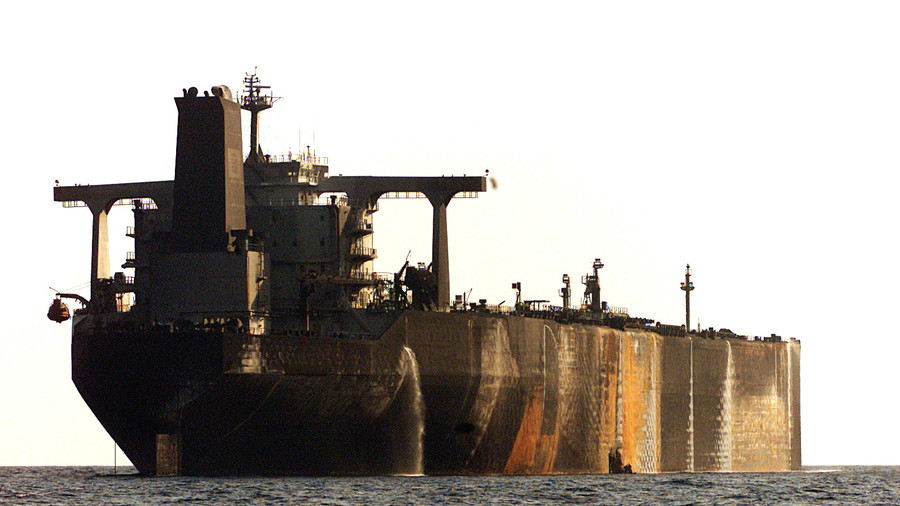
 Limits on support for Saudi campaign ‘nothing but fig leaf to shield US complicity in Yemen’
Limits on support for Saudi campaign ‘nothing but fig leaf to shield US complicity in Yemen’ 
 Limits on support for Saudi campaign ‘nothing but fig leaf to shield US complicity in Yemen’
Limits on support for Saudi campaign ‘nothing but fig leaf to shield US complicity in Yemen’ 

